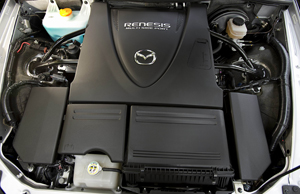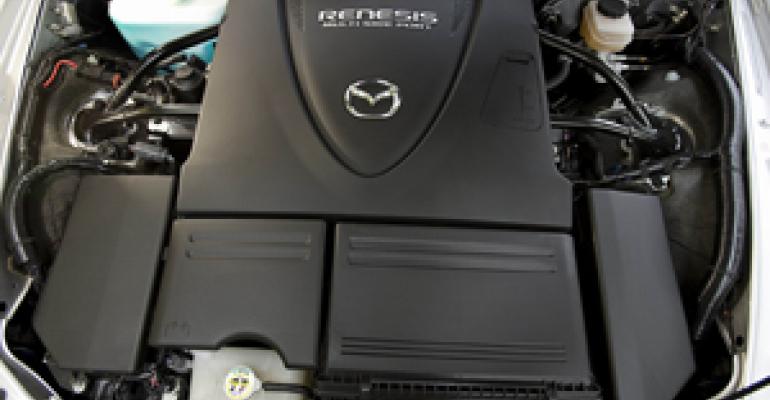
VANCOUVER, BC – After 44 years, the future of the rotary engine at Mazda, the last mass-market auto maker to produce the piston-less mill, is cast in doubt.
The engine has been offered on the Mazda RX-8 since its introduction for the ’04 model year. But the sports car is being discontinued following the ’11 model year.
Several reports suggest research on a next-generation rotary is ongoing, with a new version to debut in coming years, perhaps as early as 2017.
However, Kiyoshi Fujiwara, Mazda executive officer-product planning and powertrain development, says there is “huge discussion” within the Hiroshima, Japan-based company whether to continue on with a rotary engine.
Fujiwara says economic hardship has some top brass looking for programs to cut, and that the engine program is on the list.
Continuing development of the rotary has been halted for now, but he hopes it will resume in the future, noting the technology is a part of Mazda’s DNA.
“I’ve always said rotary engines literally are part of our soul,” Fujiwara tells Ward’s at a media event here. “We have to continue the rotary-engine evolution.”
Apart from budgetary reasons, rotary engines also pose technical disadvantages in light of increasingly strict fuel-economy and emissions standards. They are less fuel-efficient than their traditional counterparts and don’t burn as cleanly.

They also have been known for their durability problems and burn oil quickly.
Unlike traditional engines, rotaries lack pistons, instead using a triangular rotor that spins in a circular housing. As it spins, openings around the housing are used for the intake, compression, combustion and exhaust cycles.
The setup involves fewer moving parts than conventional piston engines and allows for greater power density, smoothness and high-rpm operation.
Because of these attributes, Mazda continued development of the rotary while other auto makers abandoned it, claiming the engine fit the brand’s “zoom-zoom” performance heritage and made it unique in the industry.
Fujiwara says there are three fundamental problems with the current rotary engine. He declines to describe the issues but says two of them have been overcome.
Ironically, the rotary engine’s fate may rest in the hands of Mazda’s forthcoming Skyactiv powertrain technology, which includes a line of efficient gas and diesel engines, as well as new transmissions and architectures.
If Skyactiv is profitable, “We get money to invest in (the) rotary engine,” Fujiwara says.
The first Skyactiv technology, a 2.0L gas engine, is set to debut this October in the Mazda3 C-car. Plans call for the technology to migrate to all Mazda vehicles as they are refreshed, the auto maker says.
But even if rotary engines never again directly drive the wheels of a Mazda vehicle, they may prove beneficial should the auto maker develop an extended-range electric vehicle akin to the Chevrolet Volt.
The Volt uses a small 1.4L gas engine to generate electricity to drive the electric powertrain. A rotary engine creates less vibration than a piston engine and achieves optimal performance when running at a steady speed, making it an ideal fit for an EREV, says Robert Davis, senior vice president of Mazda’s U.S. operations.
“If you’re able to build a rotary that’s tuned to a very specific load and rpm, they’re very efficient,” Davis tells Ward’s. “Certainly, we’ve looked at those possibilities.”
Audi and supplier AVL Powertrain Engineering already are exploring the possibility of putting a rotary engine in an EREV.
AVL last year told Ward’s rotary engines offer a packaging advantage over conventional piston engines in such applications.
“The nice thing about piston engines is everybody has them, but piston engines are too large,” said Gary Hunter, chief technologist-diesel engines.



